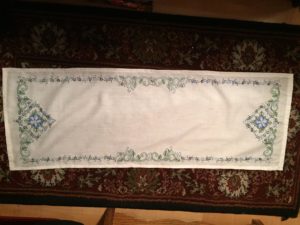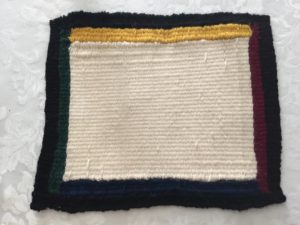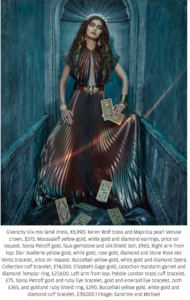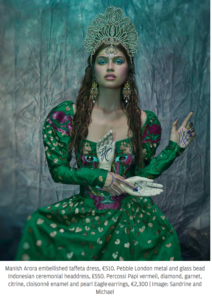Fiber arts can be any or all of these: practical skill, creative expression, personal therapy, a form of action, a way to make money.
Almost any movie set before the twentieth century shows a woman or group of women diligently working away at some sort of fiber art project—usually embroidery or cross-stitch, as those are among the easiest to create in terms of props for the set (as opposed to, say, a full-size floor loom).
The popularity of fiber arts waxes and wanes in contemporary culture. I know a number of women (and some men) who regularly practice at least two kinds of craft. Of course, I also know a number of people who are into historical re-creation, and there is significant overlap in these two groups. The Historic Hand Embroidery group on Facebook showcases some spectacular work by incredibly talented people.
The past few years, however, I have seen more of my friends and acquaintances take up various crafts as a means of personal and/or political expression. Aided by guides such as Julie Jackson’s “Subversive Cross Stitch“, even the complete beginner can find their way quickly into the joy of creating personal crafts to express their political and personal philosophies. Groups such as the Mildly Offensive Fiber Artists (MOFAs, as they call themselves) share their work, their patterns, and their tips gladly and gleefully.
I engage in several crafty delights: sewing (which is often aerobic, given the amount of swearing involved); embroidery (I use printed patterns, because life is too short to count threads); and weaving, because it’s fascinating, and also it’s part of my devotional work. Two of my favorite pieces are the embroidered cloth I created for my Sigyn altar

and the rune casting cloth I wove for my reading table:

The Completed Piece
With all three crafts (even sewing—there comes a point where it all starts flowing, and the swearing dwindles to near zero), I am able to enter a meditative state that is highly therapeutic. Focusing only on the object in front of me, concentrating solely on the movement of thread through fabric, or yarn through warp, is a wonderful moving meditation. And, at the end of it, you have A New Thing that you can keep, or give as a present, or sell. It’s a wonderful way to close out the world and clear my mind, and I have a cool thing to show for my time and effort.
There’s also the practical aspect of being able to repair or improve something—mend a pillowcase, re-attach a button (or replace boring buttons with beautiful or fun ones), hem a garment, customize a store-bought blanket with your own work—that makes life easier, more beautiful, and/or less expensive.
Fiber arts can fill many needs, both practical and intangible, and bring peace and quiet to your day.
Make of them what you will—make them yours.
Sources:
E. Tammy Kim: The Feminist Power of Embroidery
Kase Wickman: How Feminist Cross Stitching Became a Tool of the Resistance
Natalie Zarelli: The Wartime Spies Who Used Knitting as an Espionage Tool








